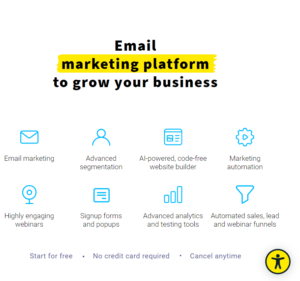When you walk into a physical store, you generally expect to see the products to be organized thoughtfully. Making your way through the rows of shelves to find what you want should be easy, and if it isn’t – well, you can just go straight back out again and move on somewhere else.
However, that involves actually doing some walking. On an online store, all you have to do to leave is tap your finger. Much easier.
So what’s the best way for an eCommerce store to retain their visitors’ interest? Many things contribute, but in this article, we’re going to focus on the importance of well-designed product categorization.
Why Is Product Categorization Important?
Product categorization is about more than just a design exercise. In fact, it’s crucial for multiple reasons.
It helps customers find what they want
First and most obviously, categorizing your products in a logical way helps your customers find what they’re looking for. If you simply uploaded all your product descriptions as one long list, you probably wouldn’t sell much.
Modern website design is all about the user experience. Ease of use is right up there alongside page loading speed and accessibility as crucial factors determining how long visitors to your site are likely to stay there. The longer they linger, the more likely they are to convert. Categorizing your products in an intuitive way helps capture your site visitors’ interest and means they’re more likely to come back.
It mimics a physical shopping experience
Don’t underestimate the importance of recreating something like a physical shopping experience online. When you go into a physical store, items are categorized by type. And physical retailers are very adept at using layout to their advantage to increase sales.
Similarly, an eCommerce store can focus on customer psychology to optimize sales. Using intuitive categorization leads to a smooth shopping experience for the customer. It also enables you to help make the customer journey more efficient all rounds.
First and most obviously, categorizing your products in a logical way helps your customers find what they’re looking for, including accurate product pricing information. If you simply uploaded all your product descriptions as one long list, you probably wouldn’t sell much.
It increases sales
The easier you make it for customers to find what they want, the more they’ll buy. Having a robust product categorization system in place means that it only takes the customer a few clicks to navigate to whatever it is they’re looking for.
It also helps encourage impulse buys. Most eCommerce stores use recommendation software to suggest related purchases. If your categorization system isn’t working well, it’s possible those recommendations won’t be particularly relevant, so you could miss out on cross-selling opportunities.
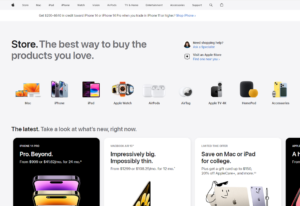
Image sourced from Apple
It’s excellent for SEO
There are several technical advantages to having rock-solid product categorization too. For an eCommerce startup, SEO is of critical importance when attempting to get that vital first foothold in a competitive market.
Search engines like Google use crawlers to examine websites, trying to figure out how they’re organized and what they contain. Having a logically laid out site is the best way of making your site crawler-friendly. This is particularly true if you have many product pages, because the logic in how they relate to each other has to be clear for your site to rank high in search engine results pages.
How To Get Started with Product Categorization
This may be all very well in theory, but how do you make it work in practice? Well, if you follow these steps, you won’t go far wrong.
Establish your data sources
The very first thing to do is to establish which sources to use for your product data. For most eCommerce operations, this will mean information gathered from suppliers. It will include all the details about each product such as name, size, color, and so on. You may be dealing with quite a wide variety of sources, such as:
- Product catalogs
- Spreadsheets
- Information update files
- Data feeds
Collect the data
Now you understand where your data’s coming from, it’s time to collect it. When you do, all the information will need to feed into one centralized repository that you keep yourself, so that you have control over how you store and use the data. A good way of doing this is to use a Product Information Management system (PIM), which lets you organize all your products methodically.
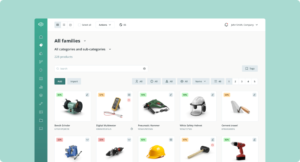
Image sourced from Saleslayer
Remember this will be a continuous process as new products are added and old ones deleted, so it’s a good idea to automate it. If you expect to add products often, you should look to set up a streaming ingestion procedure, which allows for real-time updates. As soon as a new product appears or an existing product is updated, the data can be ingested and processed immediately for categorization.
Start creating product categories
Your categories need to sit in a logical hierarchy. At the top of it, you will have your main categories (sometimes known as meta categories), each encompassing a number of subcategories. You should create these with customer needs in mind since that’s how they’ll be used on your site.
The main categories will be the broadest ones, and what you choose for them will depend on what you sell. For example, a site that sells multiple types of products might go with this kind of split of main categories:
- Fashion
- Books
- Electronics
- Toys
- Home & garden
- Pet supplies
But if the site is purely dedicated to one of these – for example, fashion – then it wouldn’t make sense to have “Fashion” as a main category, because everything would come under that category! This would just mean adding a redundant level into the category tree. Instead, it would be much better to have main categories like this:
- Women’s
- Men’s
- Kids’
- Footwear
- Accessories
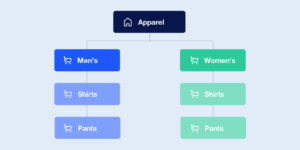
Image sourced from Feedonomics
The subcategories – the branches of the category tree, if you like – then group products together by more specific attributes. So, in our first example above, you might see the “Books” category split into subcategories by genre. In the second example, “Women’s” would be broken down by clothing type (dresses, skirts, tops etc.).
Place products into categories
It all sounds logical, but it’s easy to come unstuck. For instance, it’s not a good idea to keep on nestling lots and lots of subcategories one under another, as tempting as that may be. When you place your products into subcategories, you need to make sure there’s a healthy number of items in each one, so don’t get too granular with your categorization, or pretty soon your site will become frustrating to navigate.
There are a lot of product attributes that can be tags rather than separate categories: color, size, stock number, and so on. Your customers will still be able to search for these without them having to constitute completely independent categories of their own.
Remember that the primary purpose of this process is to help your customers with navigation. And from there, to expedite their selection process and, with any luck, encourage them through the express checkout as efficiently as possible.
Generally, it’s best to stick to three layers in your hierarchy as a maximum. That’s to say: main categories, subcategories of those, and sub-subcategories of those. Keep it simple, in other words.
Review and revise
There will be a certain amount of trial and error here. You can be proactive about it and A/B test different storefronts if you like. However, that can be time-consuming for smaller operators and isn’t entirely necessary.
The key point is to keep an eye on customer behavior and crucial eCommerce metrics. When you study how people actually use your site, you may find that some of the relationships between products and the categories you’ve placed them in don’t quite stack up for customers. If that’s the case, follow their lead and think about whether you need to give your categories a tweak.
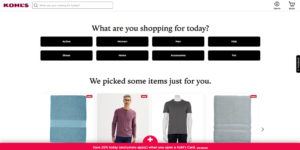
Image sourced from Kohl’s
Product categorization best practices
What to do
Name categories with one eye on SEO: When naming your product categories, strike a balance between intuitiveness and search engine optimization (SEO). Conduct keyword research to understand what potential customers are searching for before finalizing your category names. This approach ensures that your categories are not only user-friendly but also optimized to attract organic traffic.
Bear geolocation in mind: If you ship internationally, there may be some products you can’t sell to certain countries. To accommodate this, consider adapting your product categories based on geographic locations. This strategy helps you maintain compliance with regional regulations and ensures that all your customers can access the products they desire, enhancing overall satisfaction.
Take advantage of machine learning tech: Machine learning operations (MLOps) have come a long way over the past few years. ML algorithms can automatically categorize products based on their descriptions, images, and other attributes, so using software based on them can supercharge your site’s efficiency.
Implement breadcrumb navigation: Include breadcrumb trails on product pages so users can easily trace their path and navigate back to previous categories. This improves user experience and helps shoppers explore related products.
What not to do
Don’t put a product in more than one category: While it might seem tempting to hedge your bets, this is a huge SEO no-no. That’s because the search engine crawler will identify it as duplicate content and punish your site for it in SERPS.
Don’t have an “other” category: Some curious souls might click on it, but plenty of people won’t. It’s much better to assign difficult-to-categorize products to a named category, even if the link seems a little tenuous. Of course, if you find you have a lot of products like this, you should probably be rethinking your categories overall.
Steer clear of categories with too few or too many products: Strive to maintain a balance within categories. If a category contains only a handful of products, it might not warrant its own category and could be merged with another. Conversely, if a category has an overwhelming number of products, consider creating subcategories to improve organization.
Putting everything in its place
Getting product categorization right can be more complex than it first appears, particularly when you’re trying to get an eCommerce startup off the ground.
With a little planning and research though, it’s certainly possible to do it well. And that means a great user experience for your customers – and a good chance they’ll come back to you again and again.
About Author:

Pohan Lin is the Senior Web Marketing and Localizations Manager at Databricks, a global Data and AI provider connecting the features of data warehouses and data lakes to create lakehouse architecture along with TensorFlow by Databricks.
- SEO Powered Content & PR Distribution. Get Amplified Today.
- PlatoData.Network Vertical Generative Ai. Empower Yourself. Access Here.
- PlatoAiStream. Web3 Intelligence. Knowledge Amplified. Access Here.
- PlatoESG. Carbon, CleanTech, Energy, Environment, Solar, Waste Management. Access Here.
- PlatoHealth. Biotech and Clinical Trials Intelligence. Access Here.
- Source: https://blog.2checkout.com/product-categorization-for-ecommerce-startups/
- :has
- :is
- :not
- :where
- $UP
- 1
- 195
- 300
- 32
- 80
- a
- Able
- About
- about IT
- above
- access
- accommodate
- accurate
- actually
- add
- added
- adding
- adept
- ADvantage
- advantages
- again
- AI
- algorithms
- All
- allows
- along
- alongside
- also
- amount
- an
- and
- Another
- any
- appears
- Apple
- approach
- architecture
- ARE
- article
- AS
- At
- attempting
- attract
- attributes
- author
- auto
- automatically
- AVG
- back
- Balance
- based
- BE
- because
- become
- before
- BEST
- Bets
- Better
- between
- branches
- Broken
- but
- buy
- Buys
- by
- CAN
- capture
- case
- categories
- categorizing
- Category
- centralized
- certain
- certainly
- Chance
- Choose
- clear
- click
- Clothing
- collect
- color
- come
- coming
- completely
- complex
- compliance
- Conduct
- Connecting
- Consider
- constitute
- contain
- contains
- content
- continuous
- contribute
- control
- conversely
- convert
- could
- countries
- course
- crawler
- create
- Creating
- critical
- crucial
- curious
- customer
- customer behavior
- Customer Journey
- Customers
- data
- data warehouses
- Databricks
- dealing
- dedicated
- Design
- desire
- details
- determining
- different
- do
- doing
- Dont
- down
- each
- ease
- ease of use
- easier
- easily
- easy
- ecommerce
- efficiency
- efficient
- efficiently
- else
- enables
- encompassing
- encourage
- Engine
- Engines
- enhancing
- ensures
- entirely
- error
- establish
- etc
- Ether (ETH)
- Even
- everything
- examine
- example
- excellent
- Exercise
- existing
- expect
- expedite
- experience
- explore
- eye
- fact
- factors
- false
- far
- Fashion
- Features
- few
- Figure
- Find
- finger
- First
- Focus
- follow
- For
- from
- frustrating
- gathered
- generally
- genre
- geographic
- get
- Give
- Global
- Go
- going
- good
- great
- Ground
- Group
- handful
- Have
- having
- healthy
- hedge
- help
- helps
- here
- hierarchy
- High
- How
- How To
- However
- HTML
- HTTPS
- huge
- idea
- identify
- if
- images
- immediately
- importance
- important
- improve
- improves
- in
- In other
- include
- Including
- Increases
- independent
- information
- instance
- instead
- interest
- internationally
- into
- intuitive
- involves
- iPhone
- IT
- items
- ITS
- journey
- just
- Keep
- Key
- Kind
- known
- lakes
- layers
- Layout
- lead
- Leads
- learning
- Leave
- Lets
- Level
- like
- likely
- lin
- LINK
- List
- little
- loading
- locations
- logic
- logical
- Long
- longer
- Look
- looking
- Lot
- lots
- luck
- machine
- machine learning
- Main
- maintain
- make
- Making
- management
- management system
- manager
- many
- Marketing
- max-width
- maximum
- May..
- mean
- means
- Meta
- might
- mind
- ML
- ML algorithms
- more
- more efficient
- most
- move
- much
- multiple
- name
- Named
- names
- naming
- Navigate
- Navigation
- necessary
- Need
- needs
- New
- new product
- new products
- None
- number
- of
- off
- often
- Old
- on
- ONE
- ones
- online
- online store
- only
- Operations
- operators
- optimization
- Optimize
- optimized
- or
- organic
- organic traffic
- organization
- Organized
- Other
- our
- out
- over
- overall
- overwhelming
- own
- page
- pages
- particularly
- past
- path
- People
- physical
- Place
- placed
- planning
- plato
- Plato Data Intelligence
- PlatoData
- Plenty
- Point
- possible
- potential
- potential customers
- practice
- pretty
- previous
- primary
- Proactive
- probably
- procedure
- process
- processed
- Product
- Products
- provider
- purchases
- purely
- purpose
- put
- rank
- rather
- rating
- real-time
- reasons
- Recommendation
- recommendations
- regional
- regulations
- related
- Relationships
- relevant
- repository
- research
- Results
- retailers
- retain
- right
- robust
- rounds
- sales
- satisfaction
- say
- score
- Search
- search engine
- search engine optimization
- searching
- Second
- see
- seem
- seems
- selection
- sell
- Sells
- senior
- sense
- seo
- separate
- serps
- set
- several
- shelves
- Shoppers
- Shopping
- should
- Simple
- simply
- since
- sit
- site
- Size
- smaller
- smooth
- So
- Software
- some
- something
- sometimes
- somewhere
- Soon
- Sources
- specific
- split
- stack
- started
- startup
- Startups
- stay
- Steps
- Stick
- Still
- stock
- store
- stores
- straight
- Strategy
- strike
- strive
- Study
- such
- suggest
- Supercharge
- suppliers
- sure
- system
- takes
- Tap
- tech
- Technical
- tensorflow
- than
- that
- The
- the information
- their
- Them
- then
- theory
- There.
- These
- they
- thing
- things
- think
- this
- those
- though?
- three
- Through
- time
- time-consuming
- to
- together
- too
- top
- Tops
- trace
- traffic
- tree
- trial
- trial and error
- true
- trying
- tweak
- type
- types
- under
- understand
- Update
- updated
- Updates
- uploaded
- use
- used
- User
- User Experience
- user-friendly
- users
- using
- variety
- very
- visitors
- vital
- votes
- walk
- walking
- want
- Warrant
- Way..
- web
- Website
- websites
- WELL
- What
- whatever
- when
- whether
- which
- while
- wide
- will
- with
- within
- without
- words
- Work
- working
- would
- Wrong
- years
- you
- Your
- yourself
- zephyrnet


